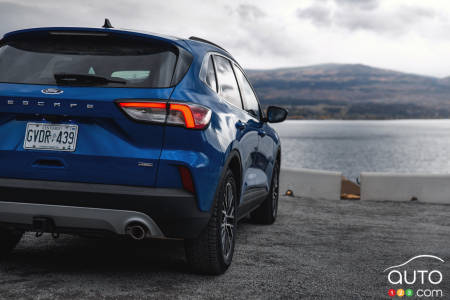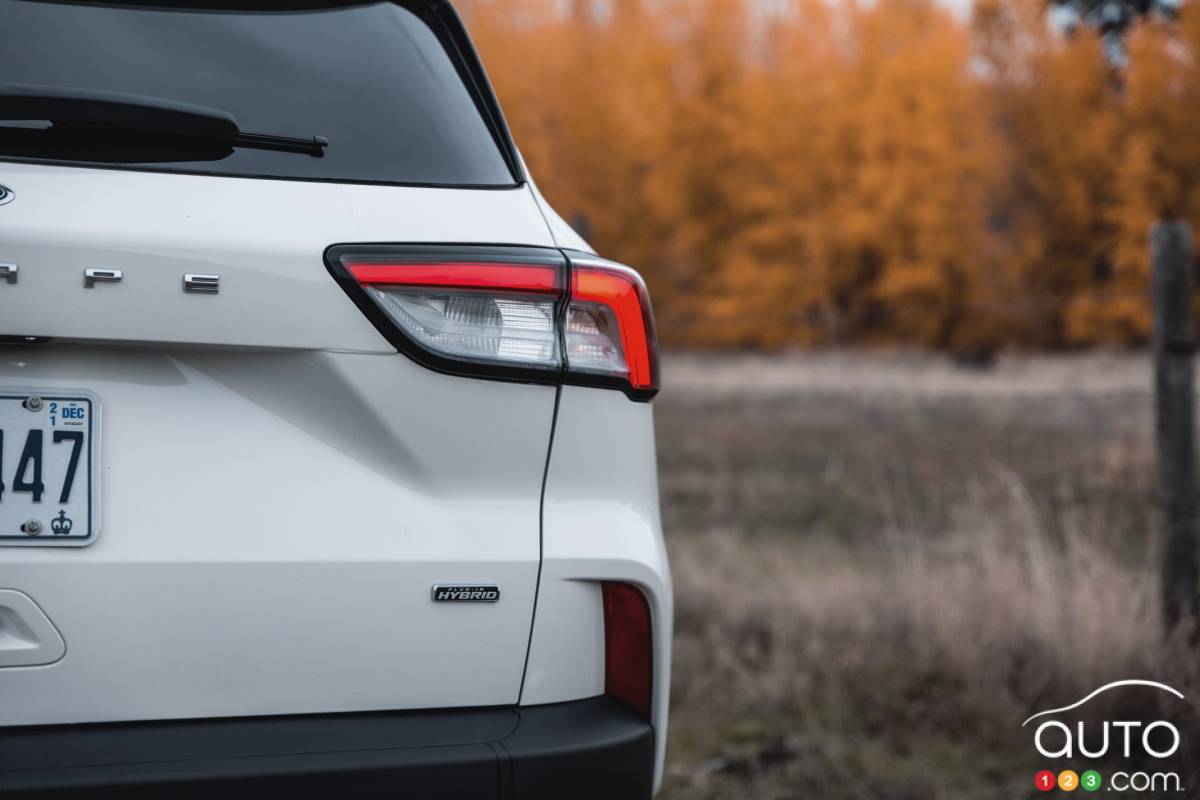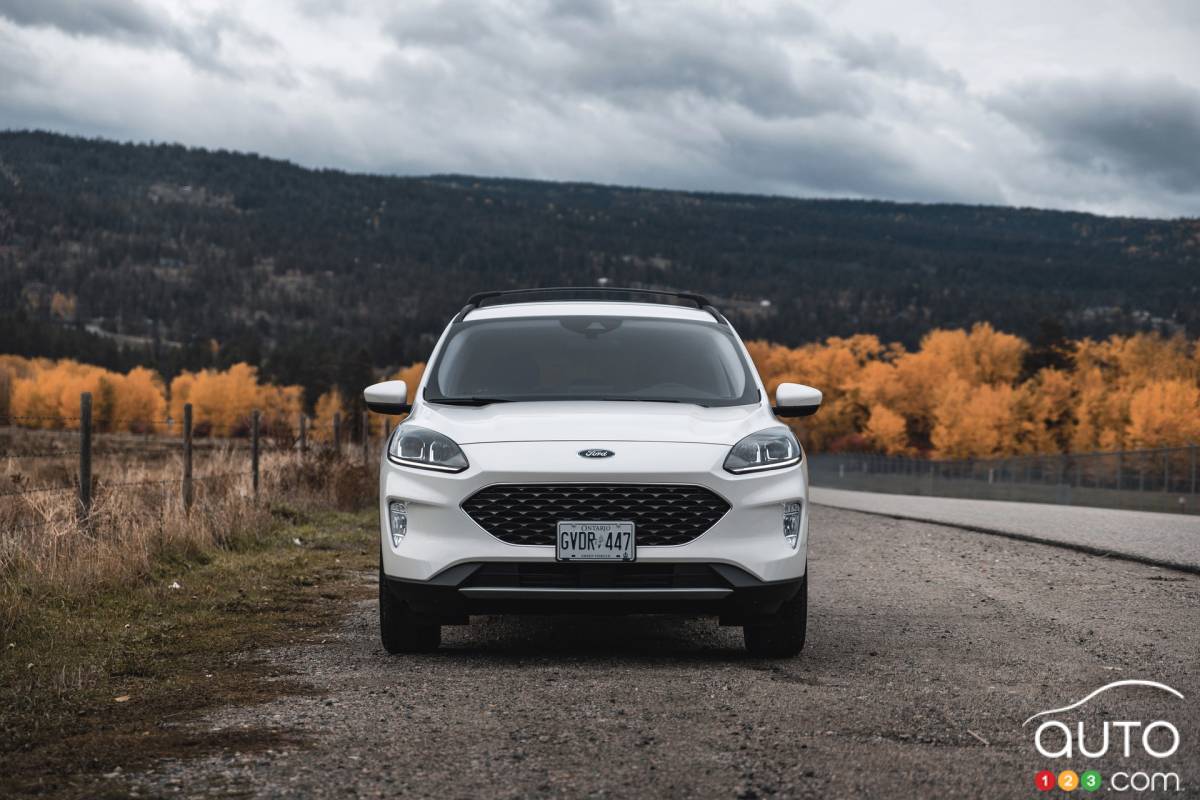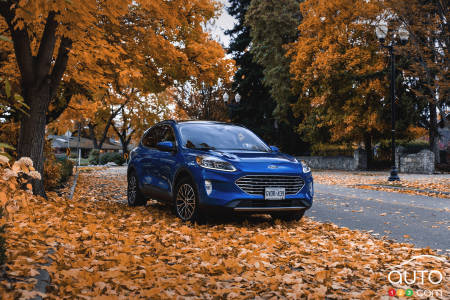Auto123 reviews the 2021 Ford Escape Plug-In Hybrid.
Kelowna, BC - When Ford introduced its next-generation Ford Escape in 2019 (as a 2020 model), there was talk of four powertrains: the two gas-powered offerings, the hybrid, and the plug-in hybrid. The first three arrived quickly on the market, but the last one has been a long time coming, so much so in fact that it's the end of October 2021 and Ford of Canada is only now making the new 2021 model year plug-in model available for test drives.
This is even though the model has been on sale across the country since July. Truth is, Ford of Canada had a hard time getting a large enough fleet together to host a driving event. At dealers, the first few units of the model have trickled in - just over 1,000 units have sold since the summer, according to Ford - and the 2022 will soon be here. Though at this point, the model-year doesn't matter, as there will be very little difference between the two editions.
Whatever the year attached, consumers now have one more option in the compact plug-in hybrid segment, so that’s good news for them. The Ford Escape Plug-In Hybrid competes with the Toyota RAV4 Prime, but also with the Mitsubishi Outlander PHEV, the pioneer of the group. But one potential hiccup for the model involves the drivetrain of this most-fuel-economical of the Escape variants. This plug-in hybrid cannot be mated to an all-wheel drive system like its competitors. Buyers might look at this two-wheel drive configuration and say no thanks.
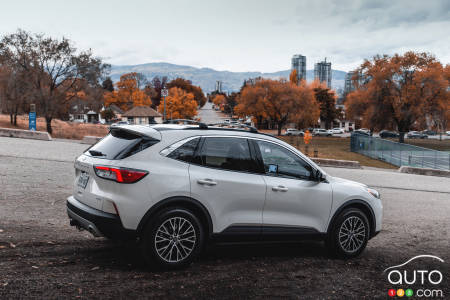
The specs
At first glance, the Ford Escape Plug-In Hybrid looks identical to the other versions of the crossover, except for that hatch on the front fender... for the charging cable of course! But there are a few more distinguishing marks: the vehicle's rims are unique to the model, and there’s a tiny "Plug-In Hybrid" badge on the right side of the trunk.
Under the hood, the Escape Plug-In Hybrid essentially takes the basics of the Ford Escape Hybrid, namely the 2.5L Atkinson-cycle 4-cylinder gasoline engine, and hooks it up to a fourth-generation hybrid system. That system includes a 96-kW electric motor connected to a 14.4-kWh battery and a continuously variable transmission, while a brake energy recovery system is included. All in all, combined output reaches 220 horsepower, with torque lagging behind at 155 lb-ft, the same as in the hybrid version.
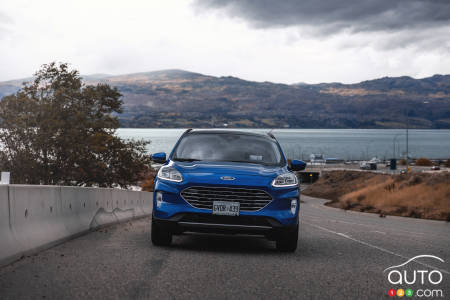
Three trims
The Ford Escape Plug-In Hybrid can be ordered in three trims: SE, SEL and Titanium. The base SE model starts at $37,649, followed by the SEL at $40,649, and the Titanium at $43,749. On the options list, the Co-Pilot360 package ($850) adds cruise control and lane keeping assist, steering assist and voice-activated navigation, SiriusXM Traffic app and traffic sign recognition; it can only be had with the SE and SEL trims.
Ford has thought of Canadian drivers with the Cold Weather Package ($1,000), which includes a remote starter, heated steering wheel and mirrors. The Convenience Package ($1,000) adds a power driver's seat, signature LED headlights, power liftgate, wrapped steering wheel, rear seat armrest and SecuriCode keyless entry. These last two packages apply only to the SE trim.
A little higher up the range, the Ford Escape Plug-In Hybrid SEL can be ordered with an optional Technology Package ($2,500) with a 10-speaker audio system, foot-activated power liftgate, 12.3-inch information screen behind the steering wheel, front seat memory package and wireless smart device charging.
Finally, the Elite Technology Package ($2,300) is exclusive to the Titanium variant and adds embroidered floor mats, head-up display, perforated leather upholstery, leather-wrapped steering wheel, panoramic roof and wireless charging for smart devices.
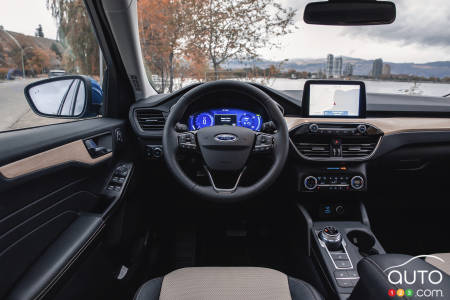
Behind the wheel
Ford of Canada invitation to the automotive press brought us to the area around Kelowna, British Columbia. Our trip was tinged with rain showers here and there on the winding roads leading to the town of Revelstoke at the foot of the Rockies. With winter tires on, the Escape performed admirably, despite the lack of all-wheel drive. The winter tires certainly didn't hurt on this mountainous route.
The Ford Escape is very comfortable, but it needs a little more soundproofing in the wheel arches, where the friction of the tires with the asphalt filled the cabin with a fairly high-decibel din. Was this the fault of the older road surface we were on? Possibly, but more sound-deadening material wouldn't hurt in my opinion.
As expected, the Ford Escape is quite agile when pushed a bit. The steering is light but precise and the suspension absorbs road irregularities very well. More powerful than all the other Escape models except for the 2.0L turbocharged version, the PHEV is certainly not as quick on the gas, partly because it's the heaviest in the lineup, but also because the CVT struggles to get the vehicle up to highway speeds.
As is common with electrified vehicles, the Escape Plug-In Hybrid offers several drive modes and even a couple of tricks to manage the battery charge. But while Eco, Normal, Sport and other modes are generally the norm, in my view the most useful modes for a PHEV are the ones allowing for control of when what engine/motor is being used. Here, an "EV" button placed between the two front passengers lets drivers choose if they want to let the vehicle manage energy as it sees fit, force the vehicle to use only the battery as a propulsion mode, save electric power for later or use the internal combustion engine to recharge the battery... at the expense of fuel economy of course.
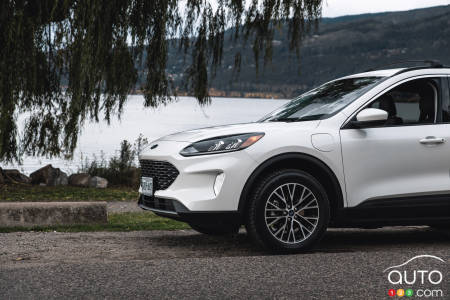
Achievable figures?
Ford claims an electric range of 60 km and a combined fuel consumption of 2.2L/100 km, a statistic that seems achievable to me by being very gentle with the right pedal and selecting the Eco mode. On the hilly roads around Kelowna, the few climbs quickly diminished the possible range in electric mode, and while the Recharge mode with the internal combustion engine can help you regain km of range, this is done at the expense of consumption. A little advice: if you drive on a mountain road, let the vehicle work by itself.
At the end of the two days of testing on a more demanding route, the vehicle averaged 5.8Le/100 km. Would this average have been lower if I had left the vehicle in hybrid mode? Surely. But would the difference have been significant? Probably not. As for the possible distance in electric mode, I couldn't verify the given figure, because the two vehicles I tested were not fully charged. Still, this purely electric option is an asset for drivers who run errands close to home.
The last word
Ford is gradually electrifying its lineup, and the Ford Escape Plug-In Hybrid is a necessary part of that push. Certainly it’s not going to make as big a splash as the Mustang Mach-E; the Escape is a far more discreet model. On the other hand, the compact SUV sits in one of the most popular categories in the country, and a plug-in variant is certainly a nice calling card for the automaker, which relies almost exclusively on a lineup of utility vehicles.
Specifications sheet of 2021 Ford Escape SE Plug-In Hybrid FWD
Specifications sheet of 2021 Ford Escape SEL Plug-In Hybrid FWD
Specifications sheet of 2021 Ford Escape Titanium Plug-In Hybrid FWD
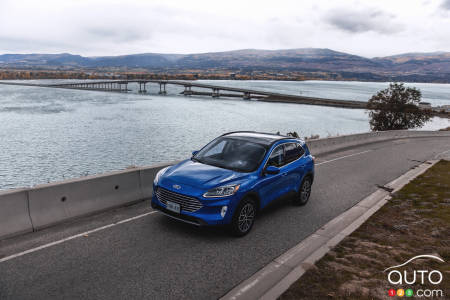
We like
The smooth ride
The easy-to-use infotainment system
Overall comfort
We like less
Soundproofing needs to be reviewed
No all-wheel drive (though is that really an issue? Discuss)
The competition
Mitsubishi Outlander PHEV
Toyota RAV4 Prime
